4. Flatware
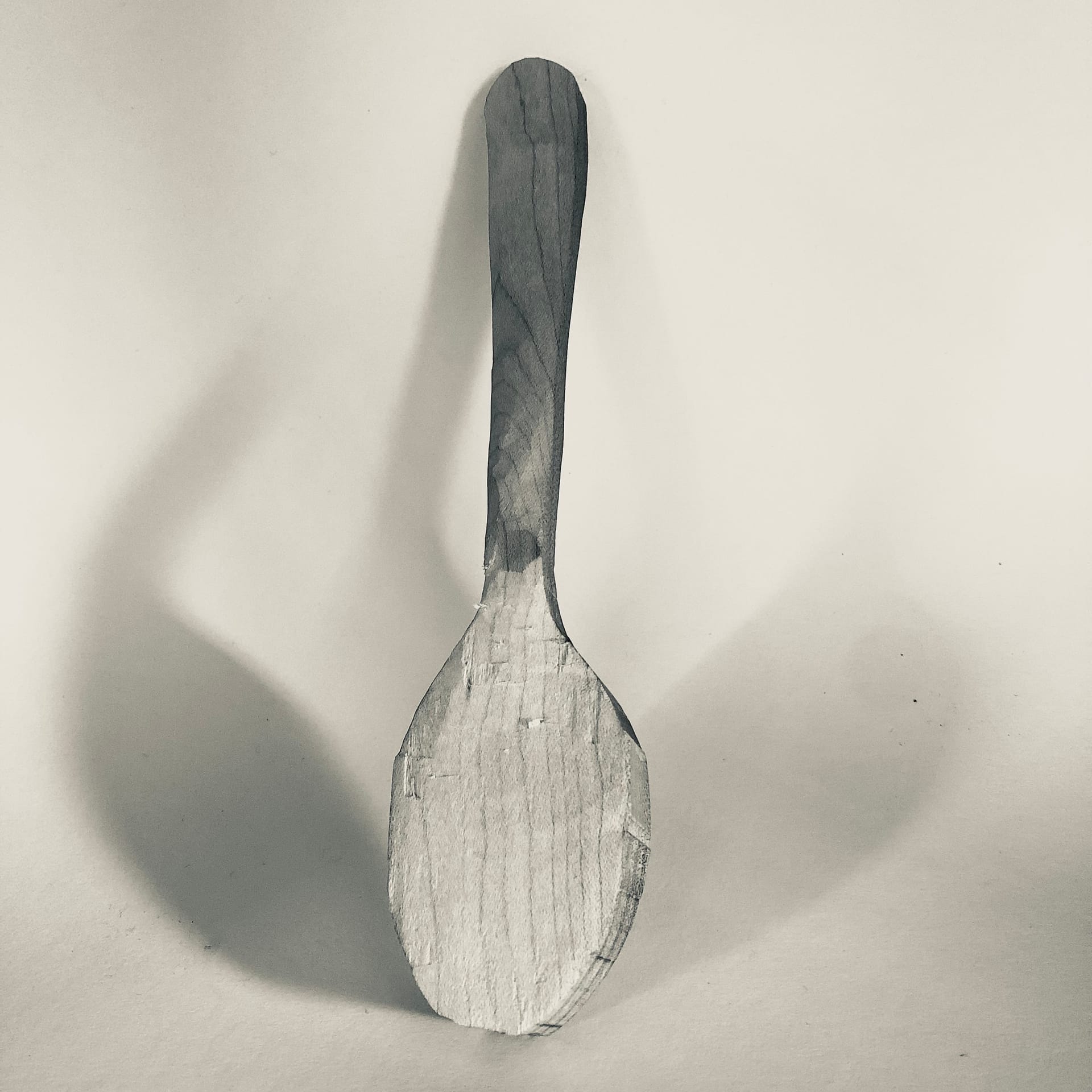
The first steps in my diet reset: a ritual water-fast, hand carving eating utensils, and healthy-eating commitment devices
Food has always been something I turn to when stressed or anxious. Big deadline? Eat 3/4 of a bag of chips. Upcoming emotional conversation? Order a pizza and stay in the for the night. Over the years, my compulsive relationship with food (particularly salty, fatty snacks) has slowly engrained and is a big reason I'm almost 25 pounds heavier than my average weight. I've tried changing my diet, but nothing sticks for at least the following three reasons:
- Environmental Queues: What's around me (the things in my fridge, my eating utensils, the smells from the bakery, etc.) has a significant impact on my diet. I can (and need to) shape these to help me make better eating decisions!
- Poor system design: Eating is made up of several different steps: meal planning, shopping, storing, preparing, and cooking food all happen before eating (and cleaning up!). If a link in the system is broken, it all falls apart. The meal planning and food preparation areas are where I can make the biggest improvements.
- Belief + Implementation Intentions: After years of struggling to establish a healthier diet, I have damaged the self-trust that I can change. I can support the system design with implementation intentions, but I need to be careful that sharing my intentions doesn't serve as a fill-in for actually making a change.
- Other factors: Stress management and sleep quality also play a role, but I'll get into that later.
So, to make a significant and lasting change to a part of my life with a ~decade of momentum in one direction, I need to address multiple aspects of my eating "system."
A Ritual Fast
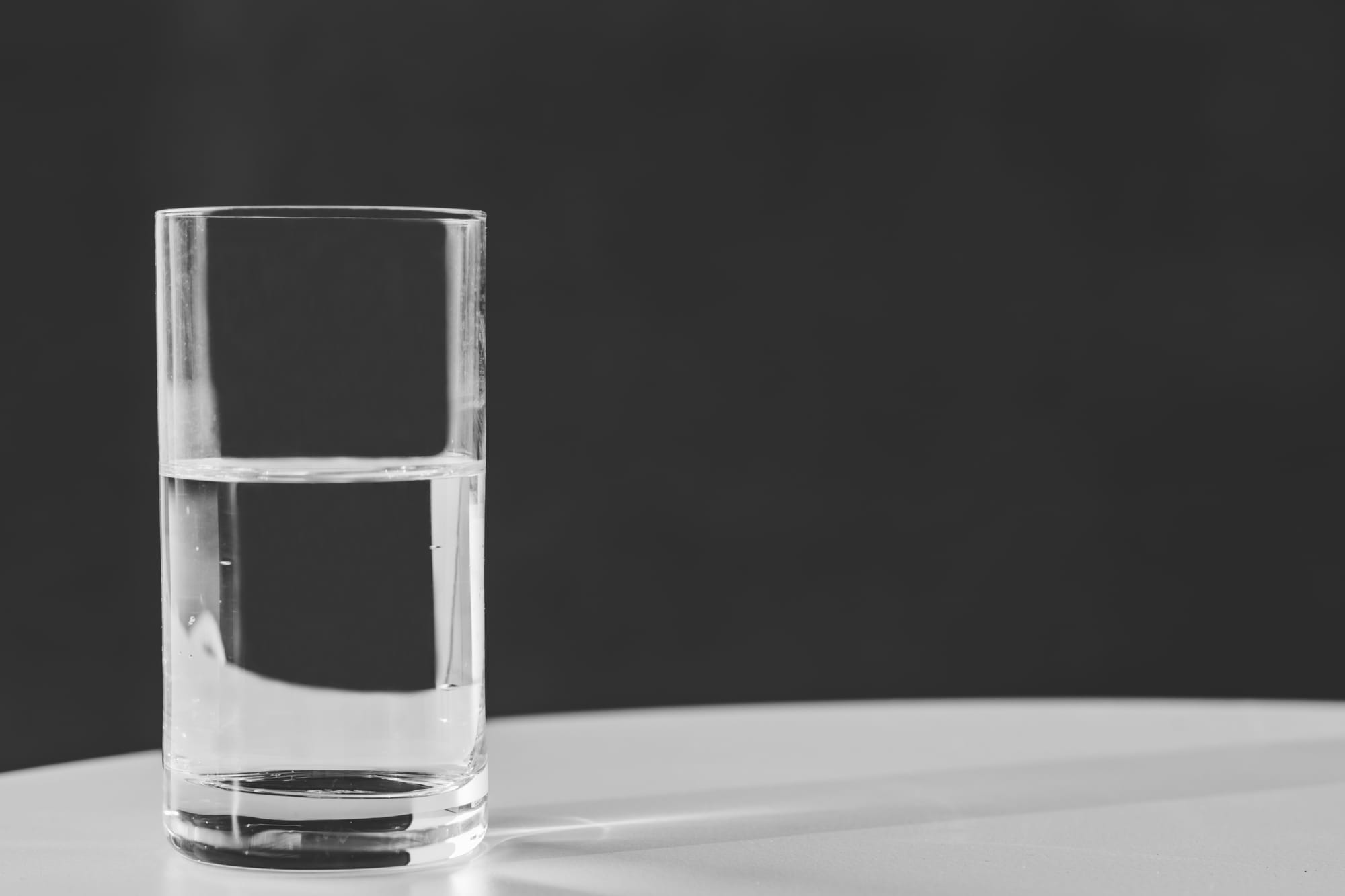
Fasting has been used for thousands of years as a method of spiritual purification. Although fasting can have some health benefits, my primary goal is to contemplate my relationship to food and more acutely feel my cravings/sensations. So, between Sunday and Wednesday (6/23-6/26), I completed a 72-hour water fast. During the fast, I only consumed water and tea. The fast was difficult, humbling, and enlightening. The three big lessons from the experience are:
- I rarely eat mindfully, but I want to savor more moving forward.
- I want to practice more gratitude for my food because it is a gift.
- I don't need to eat nearly as much as I do.
I broke my fast last night with an apple and some peanut butter. Honestly, I can't remember tasting something so delicious. Completing the fast gave me a new appreciation for the deliciousness of healthy food and renewed my confidence that I can make dietary changes. Now, the key is to remember these lessons.
Carving Flatware
During the water fast, I started carving a spoon, fork, and knife out of maple. By exerting effort to make my own flatware set, I am creating utensils that consistently remind me to stick to my healthy eating commitments. This portion of the project was inspired by several core principles of behavior change, including the IKEA effect, environmental cueing, and the fresh start effect. I haven't gotten to the fork or knife yet (carving takes more time than I anticipated!), but here are some in-progress shots of my spoon:
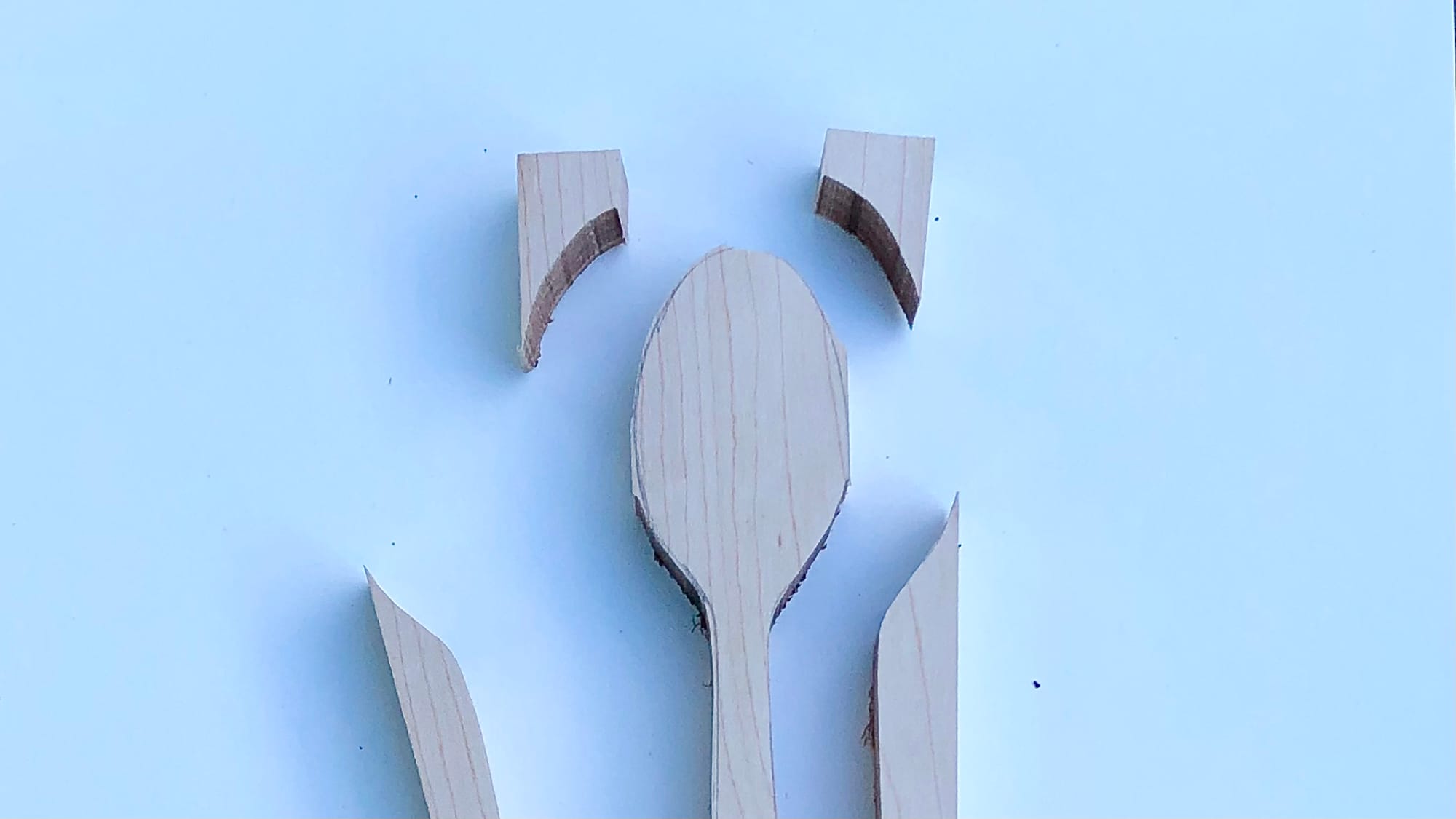
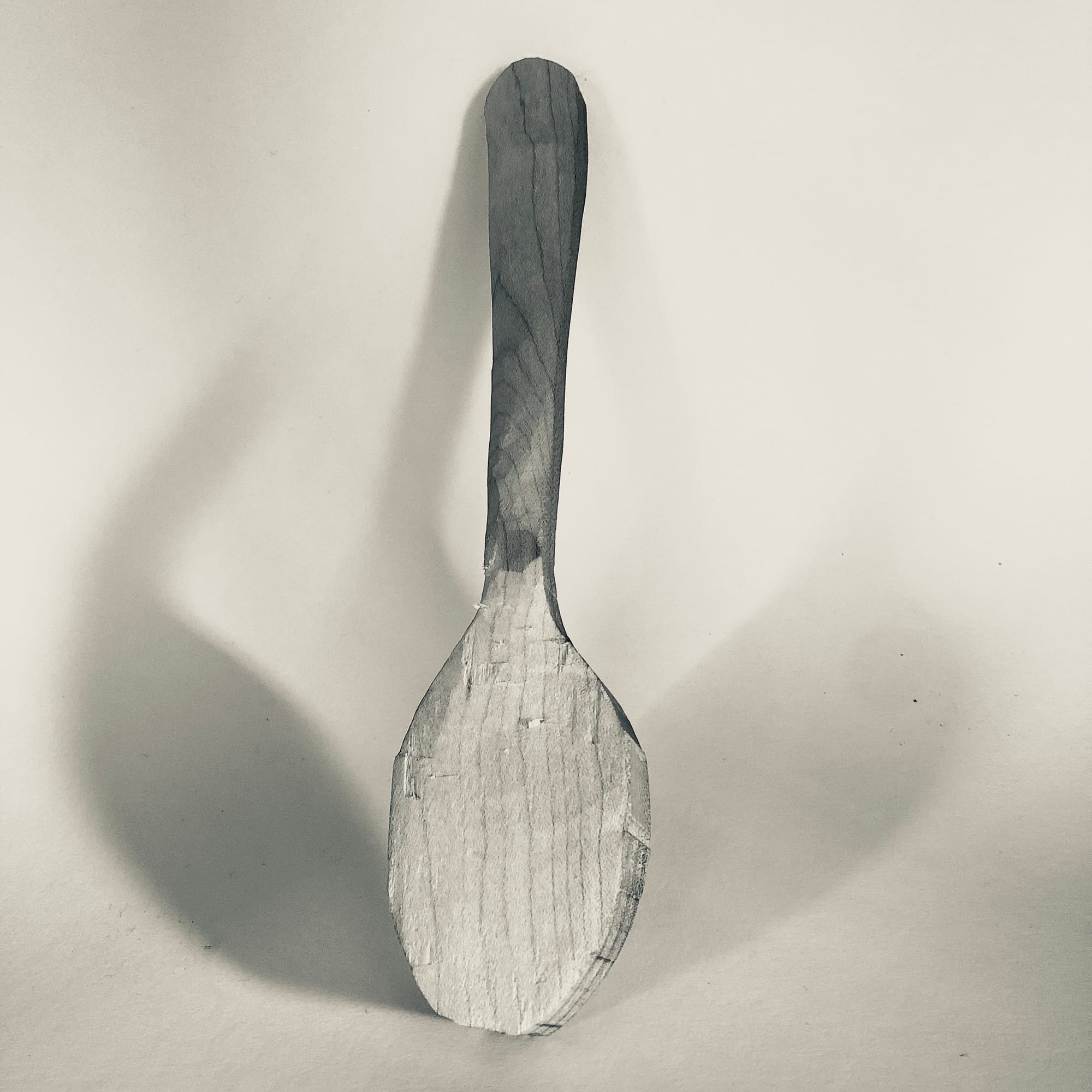
In-process spoon carving
Commitments and Next Steps
Dietary change requires consistent effort over weeks, months, and potentially years. So, in the spirit of continuing the momentum from my water fast, I am also making an "Eat Sheet" to help guide the next seven days. It's a week-long contract that lists my dietary commitments and what I must do if I fail to follow through.
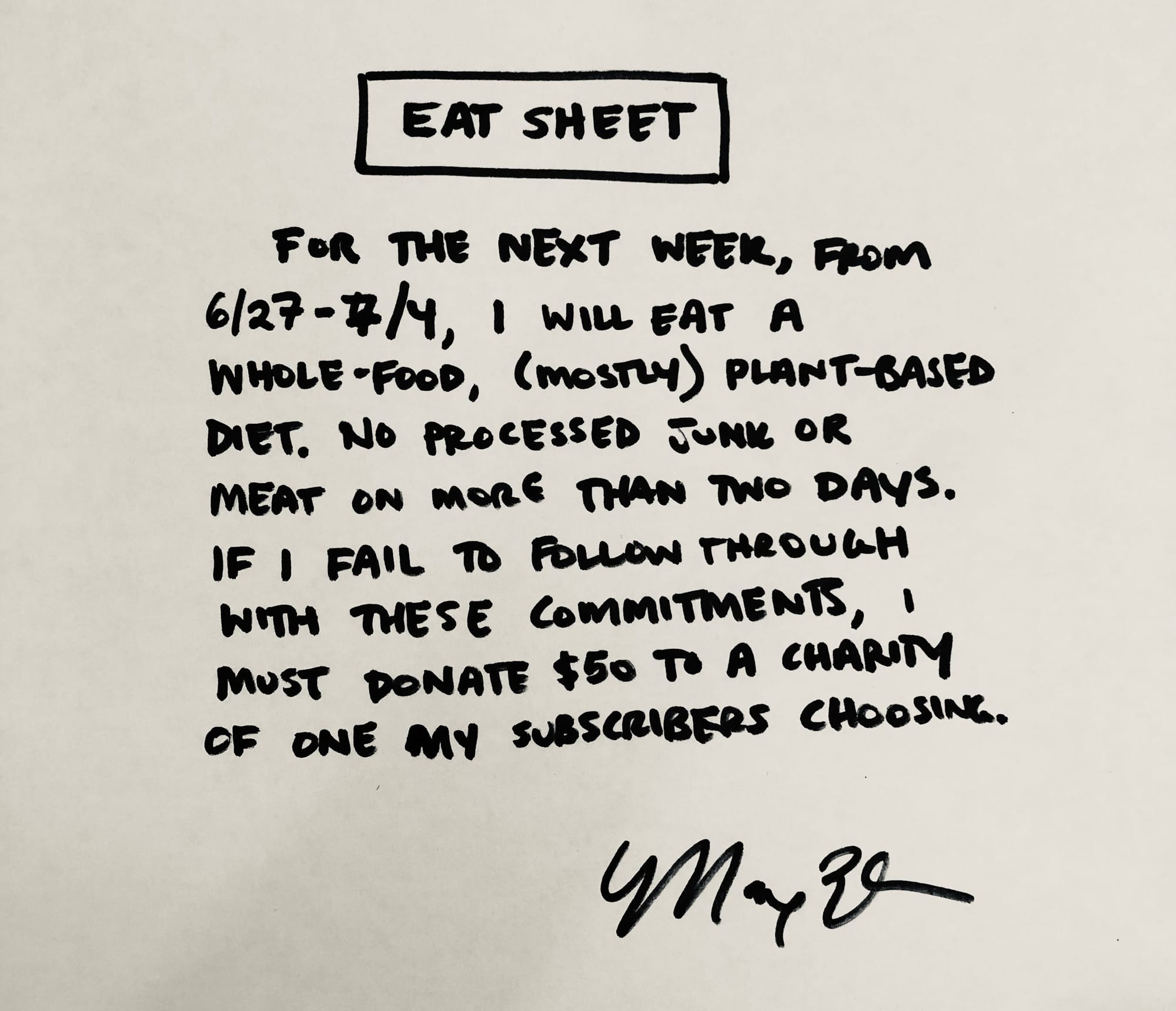
The "consequence" for this Eat Sheet includes a financial incentive, which has been proven to significantly improve adherence when making commitments. It's nothing ground-breaking, but by sharing my commitment and including a consequence, I'm continuing to leverage the principles of behavior change to make an important shift in my life.
Next Week
I will share the final photos for Flatware and the effectiveness of these activities and tools in shifting my diet. I hope you follow along as I explore how design, choice architecture, and nudges can be combined to build a healthier life.
No spam, no sharing to third party. Only you and me.

Member discussion